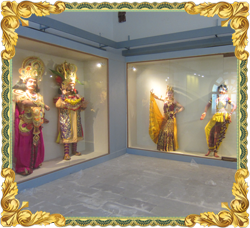
Quick Link




Maritime History
 Crossing the high seas braving the hazards of sea, travel has been part of the human traits since time immemorial. Trans-oceanic voyages were meant for search of new land to live, trade and colonize as seen from the pages of history of mankind.
Crossing the high seas braving the hazards of sea, travel has been part of the human traits since time immemorial. Trans-oceanic voyages were meant for search of new land to live, trade and colonize as seen from the pages of history of mankind.
Indian sub continent with its vast coastline offered the early voyagers a challenge to cross the high seas and travel to different countries in South, South East Asia as well as to the Arabian coast. Similarly sea faring people from early Civilizations like Rome ,Greece, Babylon etc and later sailors from England and European countries and Arab countries from the west and China,Cambodia,Indonesia,Srilanka etc from the East and South touched several ports of ancient and medieval India.From among the ancient Indian people the Kalingas, the Cholas, the Palas and the Cheras were known to have set sail across the ocean for distant lands.
This Gallery depicts the maritime history of India as well as Odisha with appropriate illustrations, maps, charts and objects.
Maritime history of India
The large number of ports, forts and trading centres along the coastline of the country bear testimony to the maritime history of India. The archaeological evidences found in Indian excavated sites and other such sites in outside countries indicate the cultural interaction between India and other countries in ancient and medieval periods of Indian history.
In Indian context , voyages on sea is referred to in the Vedic Literature. Before the vedic age, the Harappan Culture had developed and mastered the art of sea voyage as evident from the excavation at Lothal in Gujarat where an ancient dockyard has been exposed.
Maritime History of Odisha
Although Kalinga or ancient Odisha played an important role in the maritime activities from very early times its maritime history is not very well documented or exposed and has not received due attention.The maritime tradition and rituals are very popular throughout the state of Odisha. From archaeological evidences and literary sources, it is evident that ancient Odisha, known as Kalinga, was a great maritime power from about 7th C.B.C to 13th Century A.D. It had overseas trade relations with ancient countries like Greece,Rome, Java, Sumatra, Brahmadesa, Simhala, Bali, Malay etc.
The ancient Kalinga coast had famous ports like Tamralipti, Palur, Baruva, Che-Li-ta-Lo etc which were referred to by Geographers and Travellers like Ptolemy, Pliny, Fahien , Hieun Tsang or Ywan Chwang and others.
The findings of Roman pottery, coin, and terracotta objects from excavated sites of Sisupalgarh indicate the trade relation with ancient Roman empire. Similarly the discovery of roulleted ware, knobbed ware from sites of Odisha such as Radhanagar,Sisupalagarh,Kuruma,Manikapatna, Brahmavana, Khalkatapatna etc and their discovery in sites of Bali, Java, Kalimantan in Indonesia and Malayasia prove the ancient overseas connection between these regions. The findings of Chinese porcelain, ceramic, Arabic stone ware and Ceylonese coins from Odishan sites prove ancient maritime relation of ancient Odisha with China, Srilanka and Arab countries.
It seems the ancient Odia traders were overshadowed by the Arab traders in maritime trade after 13th-14th century and the overseas trading of Odia merchants almost came to an end. This is apparent from the allusions of the proverb “Aa ka ma bai -Pana gua thoi” found in the Mahabharata of Sarala Dasa, written in the 15th century A.D.
The maritime relation of Kalinga had left its strongest impact in countries like Srilanka, Myanmar, Indonesia, Malaysia and Thailand. The Hindu culture of the Island State of Bali in Indonesia has great similarity with Odia culture. The life and culture of Balinese and Odia people have strange coincidences in the sphere of language, dialect, religions practices, performing arts, crafts and architecture along with the cluster of place names.
